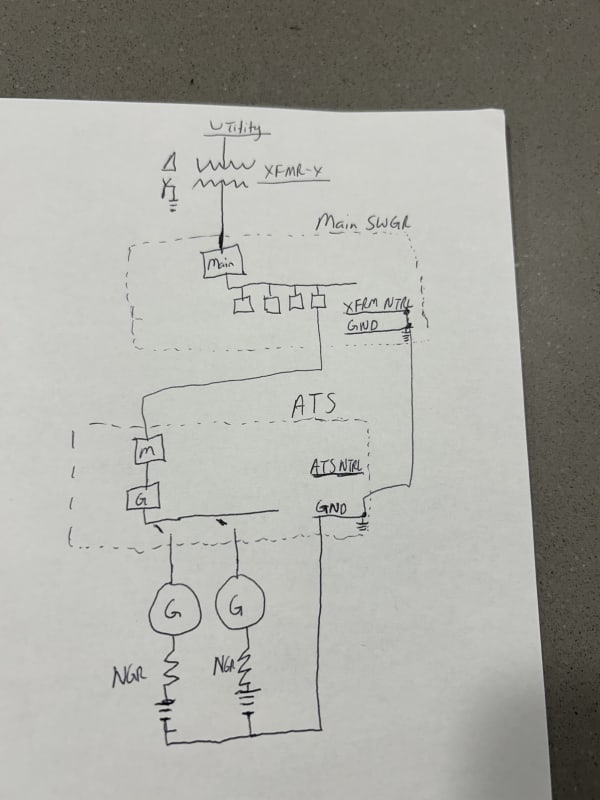Energyfit24381
Electrical
Good afternoon,
Im working on a distributed generation application where i will need to disconnect the neutral when switching from utility power to generator power. We have a bonded neutral to ground source (utilty transformer NTRL will be bonded to ground inside of the switchgear it feeds) and the back ATS controlling the gens will be grounded there as well while the gens are equipped with NGR’s that tie into that same common geound. Just looking for help understanding the purpose of having to disconnect the neutral in the event of a utility outage and switching to generator backup.
“If my critics seen me walk on water they would say its because i cant swim”
- M.T.-
Im working on a distributed generation application where i will need to disconnect the neutral when switching from utility power to generator power. We have a bonded neutral to ground source (utilty transformer NTRL will be bonded to ground inside of the switchgear it feeds) and the back ATS controlling the gens will be grounded there as well while the gens are equipped with NGR’s that tie into that same common geound. Just looking for help understanding the purpose of having to disconnect the neutral in the event of a utility outage and switching to generator backup.
“If my critics seen me walk on water they would say its because i cant swim”
- M.T.-

